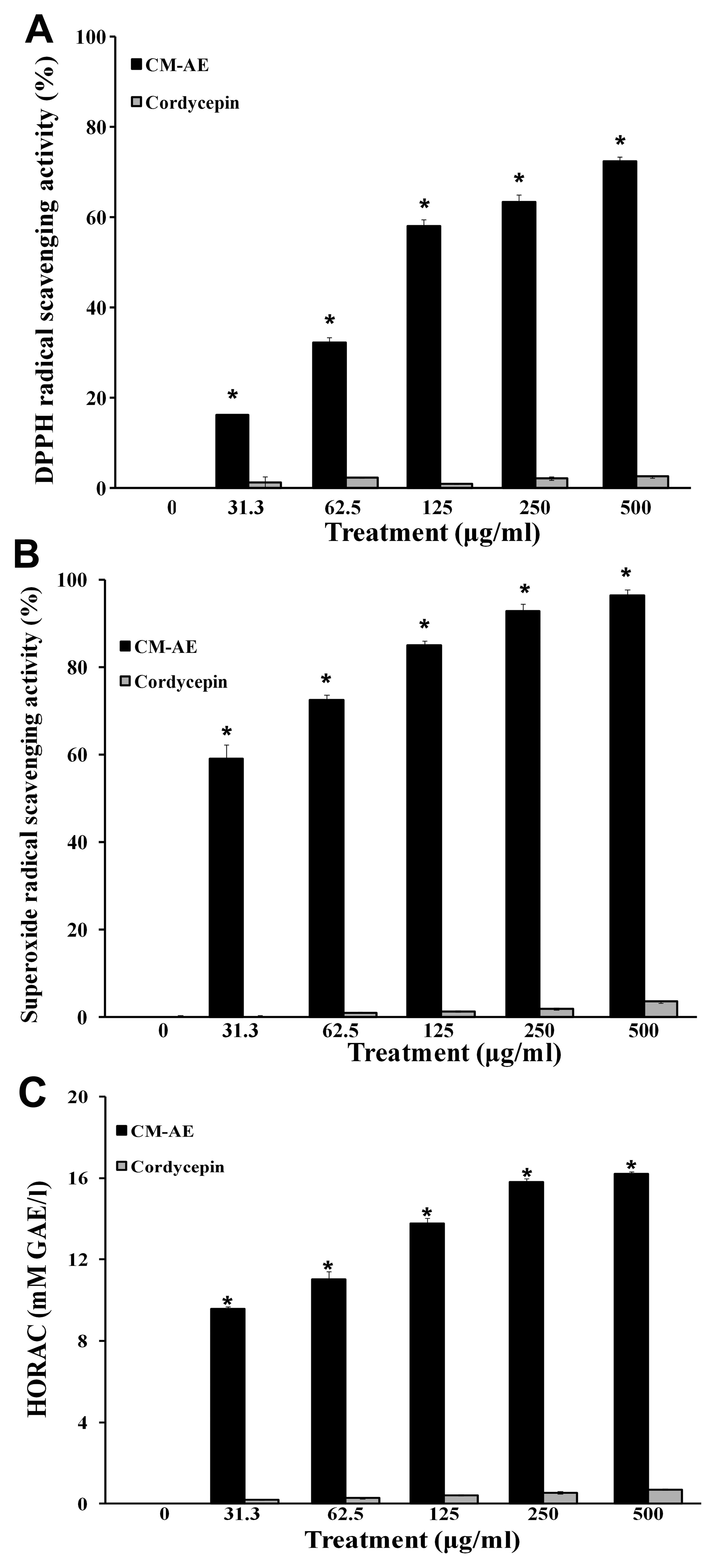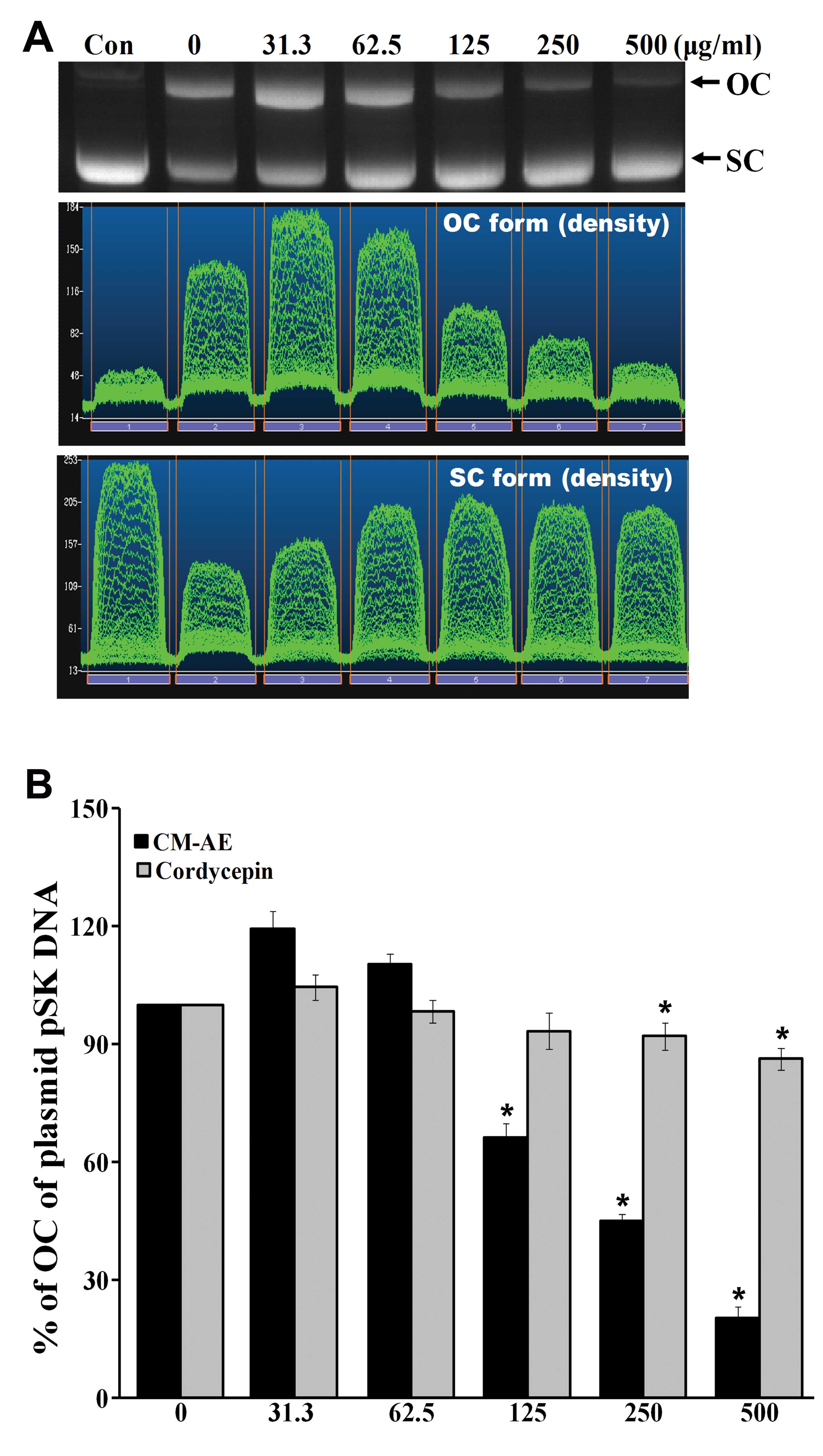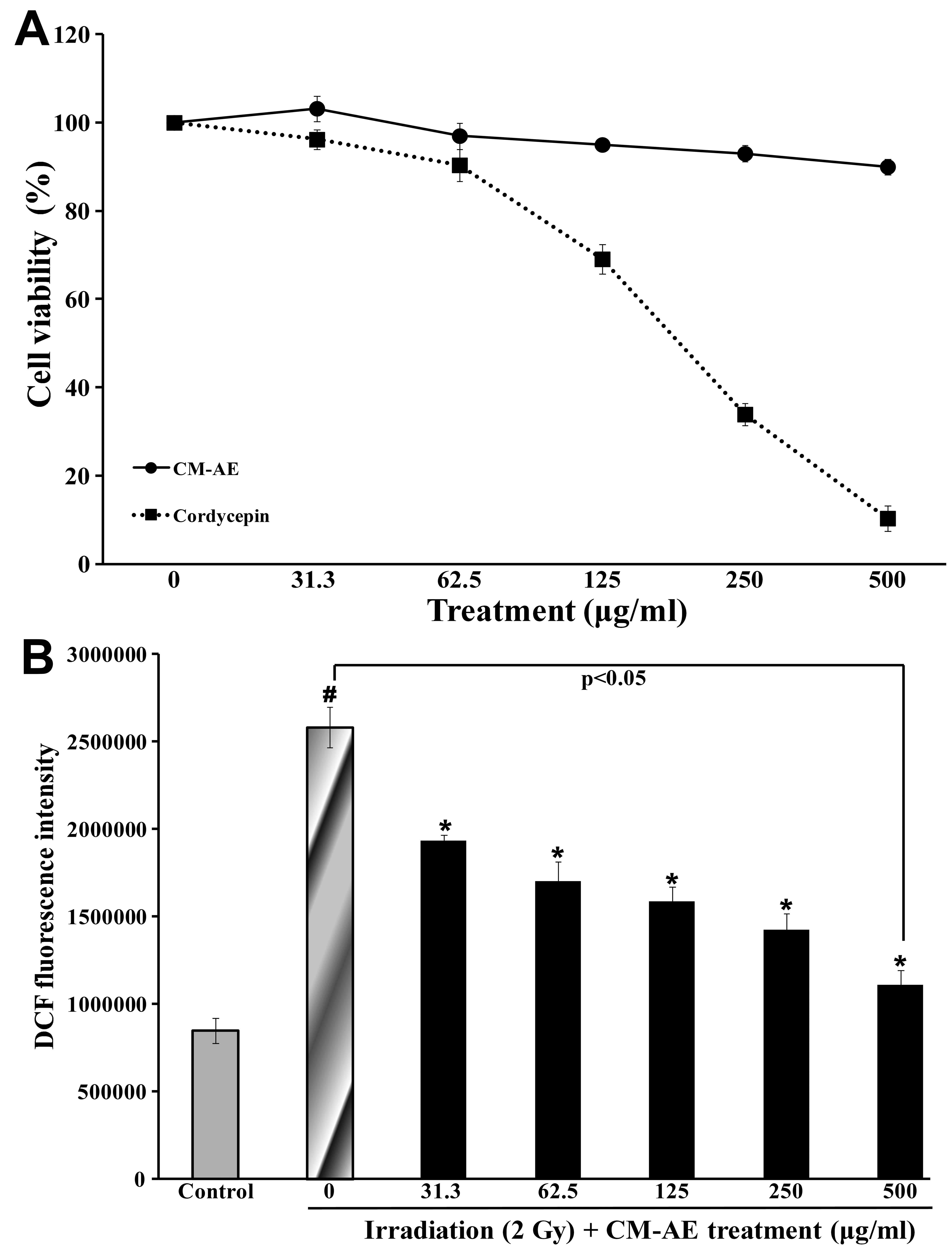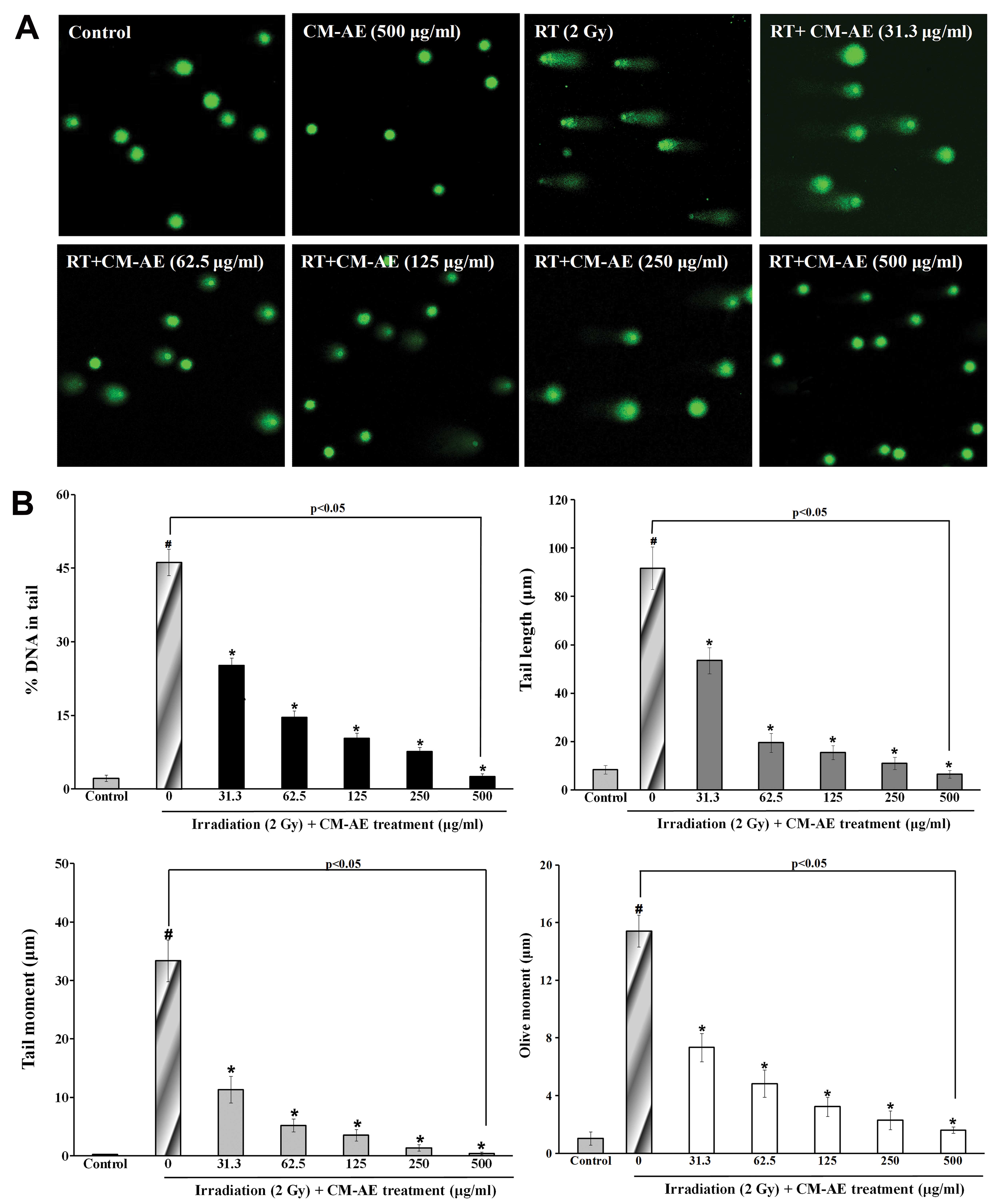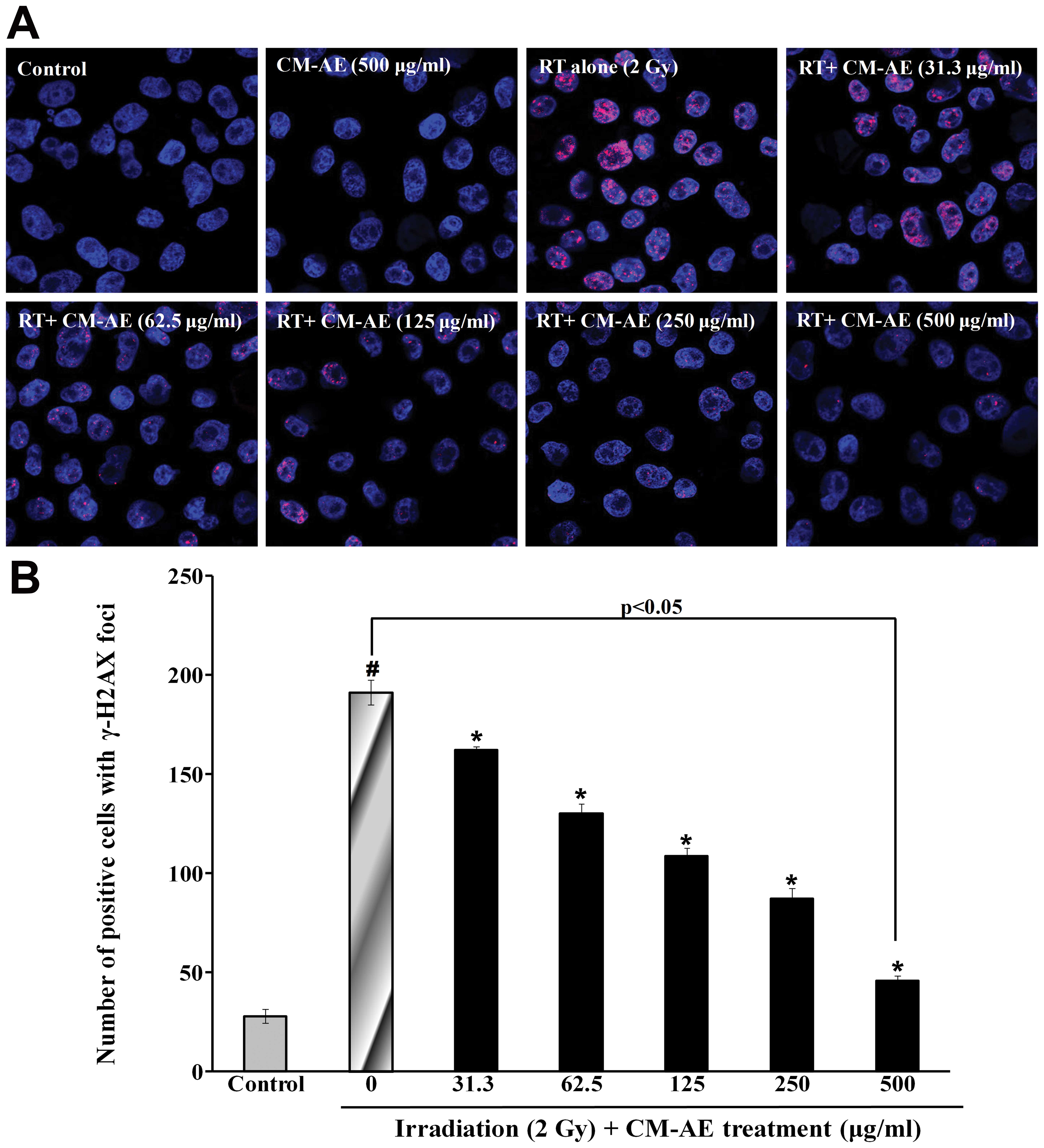|
1
|
Formenti SC and Demaria S: Systemic
effects of local radiotherapy. Lancet Oncol. 10:718–726. 2009.
View Article : Google Scholar : PubMed/NCBI
|
|
2
|
Kaanders JH and Ang KK: Early reactions as
dose-limiting factors in radiotherapy. Semin Radiat Oncol. 4:55–67.
1994. View Article : Google Scholar : PubMed/NCBI
|
|
3
|
Welsh JS, Limmer JP, Howard SP, Diamond D,
Harari PM and Tome W: Precautions in the use of intensity-modulated
radiation therapy. Technol Cancer Res Treat. 4:203–210. 2005.
View Article : Google Scholar : PubMed/NCBI
|
|
4
|
Karbownik M and Reiter RJ: Antioxidative
effects of melatonin in protection against cellular damage caused
by ionizing radiation. Proc Soc Exp Biol Med. 225:9–22. 2000.
View Article : Google Scholar : PubMed/NCBI
|
|
5
|
von Sonntag C: The chemical basis of
radiation biology. Taylor & Francis; London: pp. 9–30. 1987
|
|
6
|
Löbrich M and Jeggo PA: The impact of a
negligent G2/M checkpoint on genomic instability and cancer
induction. Nat Rev Cancer. 7:861–869. 2007.PubMed/NCBI
|
|
7
|
van Gent DC, Hoeijmakers JH and Kanaar R:
Chromosomal stability and the DNA double-stranded break connection.
Nat Rev Genet. 2:196–206. 2001.
|
|
8
|
Weiss JF and Landauer MR: Protection
against ionizing radiation by antioxidant nutrients and
phytochemicals. Toxicology. 189:1–20. 2003. View Article : Google Scholar : PubMed/NCBI
|
|
9
|
Maurya DK, Devasagayam TP and Nair CK:
Some novel approaches for radioprotection and the beneficial effect
of natural products. Indian J Exp Biol. 44:93–114. 2006.PubMed/NCBI
|
|
10
|
Hsu H, Yang JJ, Ho YH and Lin CC:
Difference in the effects of radioprotection between aerial and
root parts of Lycium chinense. J Ethnopharmacol. 64:101–108.
1999. View Article : Google Scholar : PubMed/NCBI
|
|
11
|
Devi PU and Ganasoundari A: Modulation of
antioxidant enzymes by Ocimum sanctum and its role in
protection against radiation injury. Indian J Exp Biol. 37:262–268.
1999.
|
|
12
|
Kamat JP, Boloor KK, Devasagayam TPA and
Venkatachalam SR: Antioxidant properties of Asparagus
racemosus against damage induced by gamma-radiation in rat
liver mitochondria. J Ethnopharmacol. 71:425–435. 2000.
|
|
13
|
Zhang C, Zheng S, Zhang Y, Luo C and Guo
C: The protective effective polysaccharide and C-phycocyanin from
Spirulina platensis on acute radiation injury in mice. Acta
Nutrimenta Sinica. 18:327–331. 1997.
|
|
14
|
Paterson RR: Cordyceps: a traditional
Chinese medicine and another fungal therapeutic biofactory?
Phytochemistry. 69:1469–1495. 2008. View Article : Google Scholar : PubMed/NCBI
|
|
15
|
Mizuno T: Medicinal effects and
utilization of Cordyceps (Fr.) Link (Ascomycetes) and
Isaria Fr (Mitosporic Fungi) Chinese caterpillar fungi,
‘Tochukaso’ (Review). Int J Med Mushroom. 1:251–261. 1999.
|
|
16
|
Nag TB and Wang HX: Pharmacological
actions of Cordyceps, a prized folk medicine. J Pharm Pharmacol.
57:1509–1519. 2005. View Article : Google Scholar : PubMed/NCBI
|
|
17
|
Cunningham KG, Hutchinson SA, Manson W and
Spring FS: Cordycepin, a metabolic product from cultures of
Cordyceps militaris (Linn.) Link Part I Isolation and
characterisation. J Chem Soc. 23:2299–3200. 1951. View Article : Google Scholar
|
|
18
|
Ahn YJ, Park SJ, Lee SG, Shin SC and Choi
DH: Cordycepin: selective growth inhibitor derived from liquid
culture of Cordyceps militaris against Clostridium
spp. J Agric Food Chem. 48:2744–2748. 2002. View Article : Google Scholar : PubMed/NCBI
|
|
19
|
Yoo HS, Shin JW, Cho JH, et al: Effects of
Cordyceps militaris extract on angiogenesis and tumor
growth. Acta Pharmacol Sin. 25:657–665. 2004.
|
|
20
|
Won SY and Park EH: Anti-inflammatory and
related pharmacological activities of cultured mycelia and fruiting
bodies of Cordyceps militaris. J Ethnopharmacol. 96:555–561.
2005. View Article : Google Scholar : PubMed/NCBI
|
|
21
|
Yu HM, Wang BS, Huang SC and Duh PD:
Comparison of protective effects between cultured Cordyceps
militaris and natural Cordyceps sinesis against
oxidative damage. J Agric Food Chem. 54:3132–3138. 2006. View Article : Google Scholar : PubMed/NCBI
|
|
22
|
Chen C, Luo SS, Li Y, Sun YJ and Zhang CK:
Study on antioxidant activity of three Cordyceps sp. by
chemiluminescence Shanghai. J Trad Chinese Med. 38:53–55. 2004.
|
|
23
|
Liu J, Yang S, Yang X, Chen Z and Li J:
Anticarcinogenic effect and hormonal effect of Cordycceps
militaris. Zhongguo Zhong Yao Za Zhi. 22:111–113. 1997.(In
Chinese).
|
|
24
|
Wu WC, Hsiao JR, Lian YY, Lin CY and Huang
BM: The apoptotic effect of cordycepin on human OEC-M1 oral cancer
cell line. Cancer Chemother Pharmacol. 60:103–111. 2007. View Article : Google Scholar : PubMed/NCBI
|
|
25
|
Lin YW and Chiang BH: Anti-tumor activity
of the fermentation broth of Cordyceps militaris cultured in
the medium of Radix astragali. Proc Biochim. 43:244–250.
2008. View Article : Google Scholar
|
|
26
|
Jeong MH, Lee CM, Lee SW, et al:
Cordycepin-enriched Cordyceps militaris induces
immunomodulation and tumor growth delay in mouse-derived breast
cancer. Oncol Rep. 30:1996–2002. 2013.
|
|
27
|
Von Gadow A and Hansmann CF: Comparison of
the antioxidant activity of aspalathin with that of other plant
phenols of rooibos tea (Aspalathus linearis),
alpha-tocopherol, BHT, and BHA. J Agric Food Chem. 45:632–638.
1997.
|
|
28
|
McCord JM and Fridovich I: Superoxide
dismutase. An enzymic function for erythrocuprein (hemocuprein). J
Biol Chem. 244:6049–6055. 1969.PubMed/NCBI
|
|
29
|
Końca K, Lankoff A, Banasik A, et al: A
cross-platform public domain PC image-analysis program for the
comet assay. Mutat Res. 534:15–20. 2003.PubMed/NCBI
|
|
30
|
Jeong MH, Yang KM, Jeong DH, et al:
Protective activity of novel resveratrol analogue, HS-1793 against
DNA damage in 137Cs irradiated CHO-K1 cells. J Radiat
Res. 55:464–475. 2013. View Article : Google Scholar : PubMed/NCBI
|
|
31
|
Londhe JS, Devasagayam TP, Foo LY and
Ghaskadbi SS: Antioxidant activity of some polyphenol constituents
of the medicinal plant Phyllanthus amarus Linn. Redox Rep.
13:199–207. 2008. View Article : Google Scholar : PubMed/NCBI
|
|
32
|
Hosseinimehr SJ: Trends in the development
of radioprotective agents. Drug Discov Today. 12:794–805. 2007.
View Article : Google Scholar
|
|
33
|
Das SK, Masuda M, Sakurai A and Sakakibara
M: Medicinal uses of the mushroom Cordyceps militaris:
current state and prospects. Fitoterapia. 81:961–968.
2010.PubMed/NCBI
|
|
34
|
Yu RM, Yang W, Song LY, Yan CY, Zhang Z
and Zhao Y: Structural characterization and antioxidant activity of
a polysaccharide from the fruiting bodies of cultured Cordyceps
militaris. Carbohydr Polym. 70:430–436. 2007. View Article : Google Scholar
|
|
35
|
Wu F, Yan H, Ma X, et al: Structural
characterization and antioxidant activity of purified
polysaccharide from cultured Cordyceps militaris. Afr J
Microbiol Res. 5:2743–2751. 2011.
|
|
36
|
Hamburger M: Comment on comparison of
protective effects between cultured Cordyceps militaris and
natural Cordyceps sinensis against oxidative damage. J Agric
Food Chem. 55:7213–7214. 2007. View Article : Google Scholar : PubMed/NCBI
|
|
37
|
Ogawa Y, Kobayashi T, Nishioka A, et al:
Radiation-induced reactive oxygen species (ROS) formation prior to
oxidative DNA damage in human peripheral T cells. Int J Mol Med.
11:149–152. 2003.PubMed/NCBI
|
|
38
|
Gudkov SV, Shtarkman IN, Smirnova VS,
Chernikov AV and Bruskov VI: Guanosine and inosine display
antioxidant activity, protect DNA in vitro from oxidative damage
induced by reactive oxygen species, and serve as radioprotectors in
mice. Radiat Res. 65:538–545. 2006. View Article : Google Scholar : PubMed/NCBI
|
|
39
|
Chu HL, Chien JC and Duh PD: Protective
effect of Cordyceps militaris against high glucose-induced
oxidative stress in human umbilical vein endothelial cells. Food
Chem. 129:871–876. 2011.
|
|
40
|
Won KJ, Lee SC, Lee CK, et al: Cordycepin
attenuates neointimal formation by inhibiting reactive oxygen
species-mediated responses in vascular smooth muscle cells in rats.
J Pharmacol Sci. 109:403–412. 2009. View Article : Google Scholar
|
|
41
|
Dizdaroglu M, Jaruga P, Birincioglu M and
Rodriguez H: Free radical induced damage to DNA: mechanisms and
measurement. Free Radic Biol Med. 32:1102–1115. 2002.PubMed/NCBI
|
|
42
|
Rogakou EP, Pilch DR, Orr AH, et al: DNA
double-stranded breaks induce histone H2AX phosphorylation on
serine 139. J Biol Chem. 273:5858–5868. 1998. View Article : Google Scholar : PubMed/NCBI
|
|
43
|
Sedelnikova OA, Rogakou EP, Panyutin IG,
et al: Quantitative detection of 125IdU-induced DNA
double-strand breaks with γ-H2AX antibody. Radiat Res. 158:486–492.
2002.
|
|
44
|
Nair CK, Parida DK and Nomura T:
Radioprotectors in radiotherapy. J Radiat Res. 42:21–37. 2001.
View Article : Google Scholar : PubMed/NCBI
|















